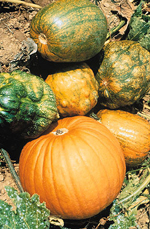Marie A. C. Langham,
South Dakota State University
Papaya is a luscious tropical fruit that is consumed for its unique flavor and its high levels of vitamins A and C. This sweet fruit may have yellow or red flesh with yellow being the preferred color. Papaya is also the second largest fruit crop grown in the state of Hawaii and is an important source of agricultural income. Hawaiian papaya growers faced the loss of their papaya crops from Papaya ringspot virus (PRSV) when it was discovered on the island of Hawaii in 1992. Transmitted by aphids, PRSV can quickly infect whole plantings of papaya causing mosaic, stunting, and eventual plant loss. No curative or preventative treatments were available for PRSV, and the disease quickly began to spread through the papaya crop destroying many plantings. Papaya growers were faced with loss of their farms as well as their crops. With PRSV spreading rapidly across the island, would the Hawaiian papaya crop be saved? And if so, what could save it?
By 1998, it seemed that the Hawaiian papaya industry would die out due to PRSV. However, it was saved by the foresight of a dedicated group of plant pathologists and by the introduction of papayas that were genetically engineered to resist PRSV. In the mid 1980s after PRSV had spread on the island of Oahu, plant pathologists, who analyzed the future impact of PRSV on Hawaii, began research to find a control for it before it was a major threat to papaya production on the island of Hawaii. Scientists, working at Cornell University and in Hawaii, decided to use genetic engineering to make papaya resistant to PRSV. Copies of the coat protein gene from PRSV were inserted into papaya cells. Messenger RNAs produced by these genetic inserts interfere with the ability of PRSV to infect the papaya and to replicate in the papaya’s cells. Thus, the genetically engineered papayas are resistant to the virus.
After the years of development and careful testing, the first release of resistant papaya cultivars, Sunup and Rainbow, was made available to commercial planters in 1998. Rainbow, with its more popular yellow color, was selected for seed production. Licensing of the transgenic papaya for commercial production proceeded through the PAC (Papaya Administrative Committee), an organized group of papaya growers. Rainbow papaya seeds were distributed to growers free of charge on a basis of need, availability, and random selection. The resistant Rainbow has been well accepted by the farmers, and now six years later, it is one of the major varieties of papaya grown in Hawaii. Rainbow has also increased papaya yields. Today, it yields 125,000 pounds per acre each year or 25 times more than the nontransgenic papaya, Sunrise. One unanticipated benefit to planting Rainbow has been that it has reduced the spread of PRSV into nontransgenic papaya by reducing the numbers of infected plants serving as viral reservoir hosts and by providing barriers to the spread of PRSV. This has increased the Hawaiian growers’ ability to produce nontransgenic papaya for Asian and other select markets. Thus, Rainbow, the commercial transgenic papaya, is the Hawaiian growers’ “pot of gold.”
For more information about the transgenic papaya and its success in Hawaii, try the following feature articles here on the APS Website:
Transgenic Virus-Resistant Papaya: The Hawaiian ‘Rainbow’ was Rapidly Adopted by Farmers and is of Major Importance in Hawaii Today (August 2004).
Transgenic Virus Resistant Papaya: From Hope to Reality for Controlling Papaya Ringspot Virus in Hawaii (July 2004).
Transgenic Virus Resistant Papaya: New Hope for Controlling Papaya Ringspot Virus in Hawaii (September 1998).
For more ideas about genetic engineering as a topic for classroom debate, see this previous K-12 News:
Genetic Engineering of Plants: A Topic for Classroom Debate
 |
Views: Even your Thanksgiving pumpkin pie can be affected by plant disease. The discolored and misshapen pumpkins in this picture are infected by Zucchini yellow mosaic virus (ZYMV).
|
